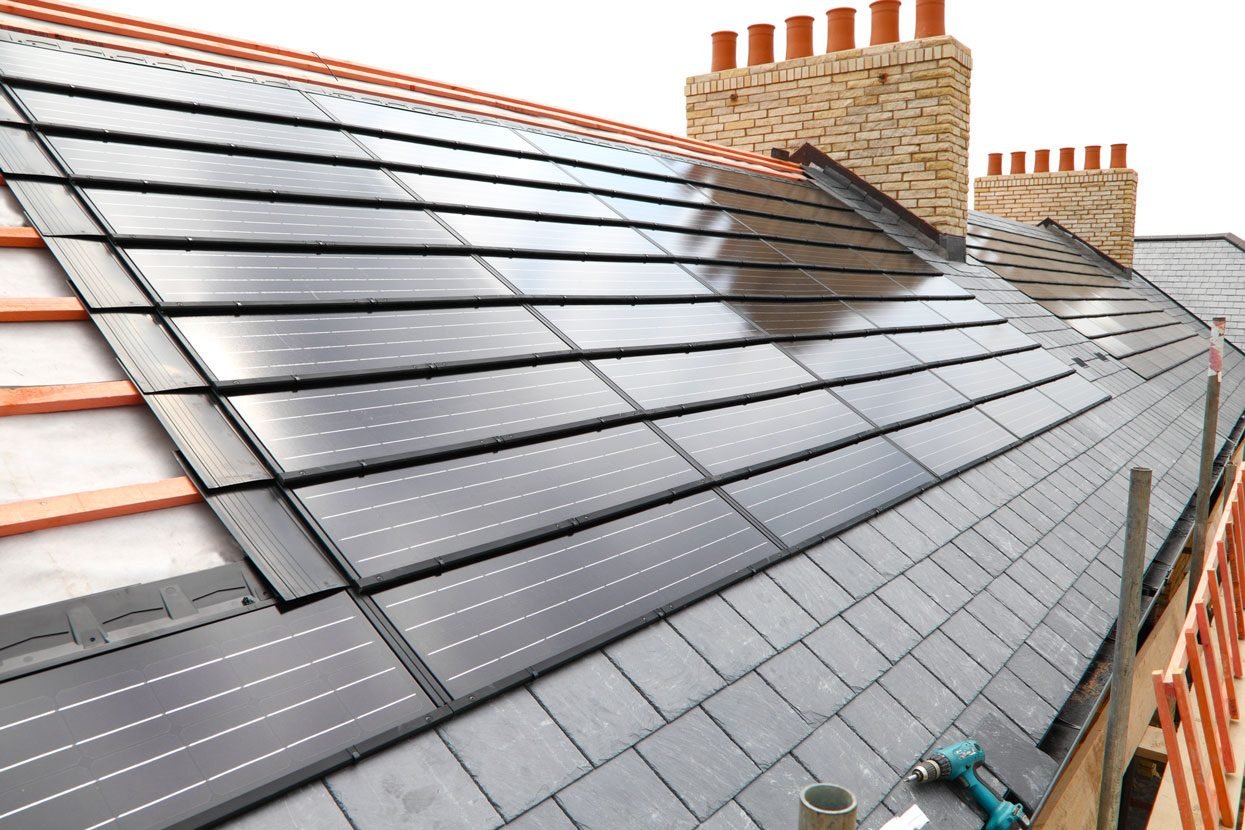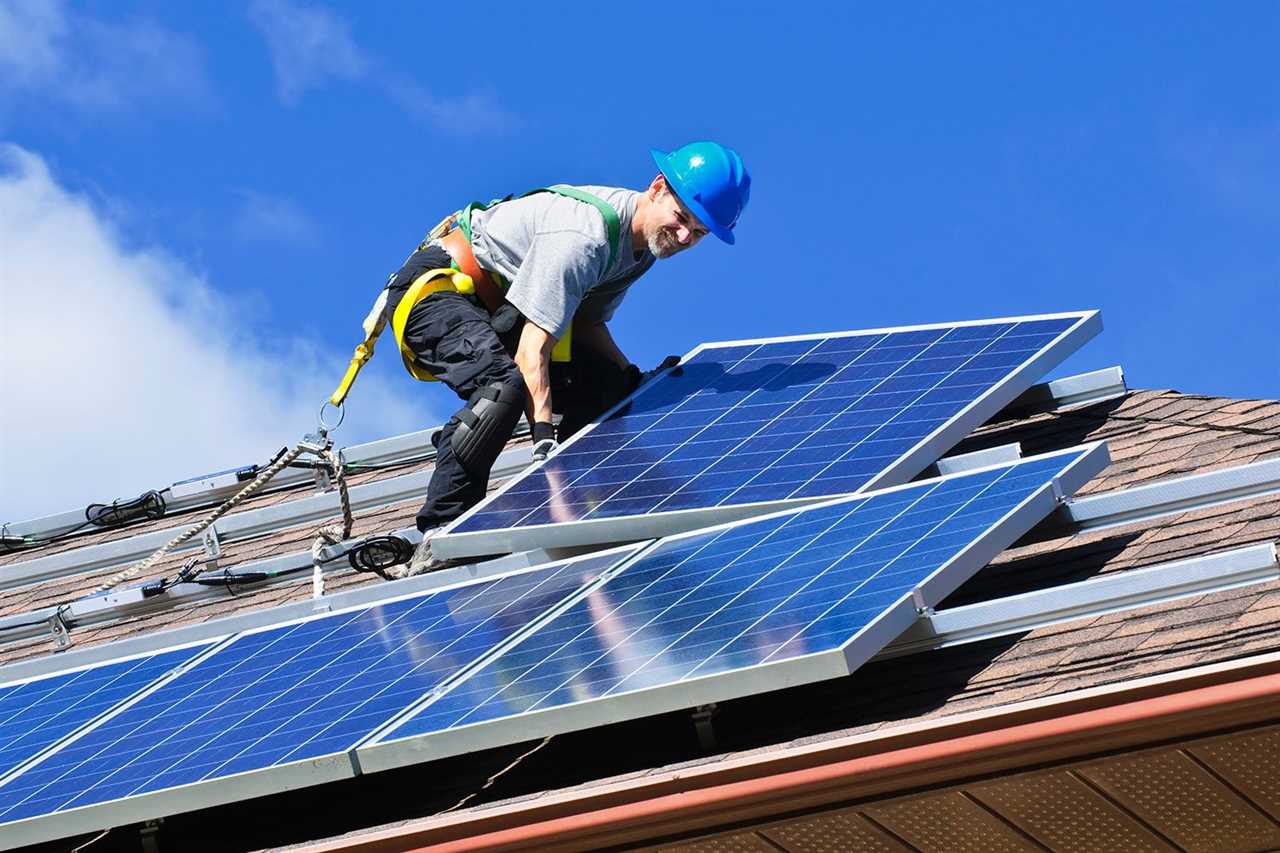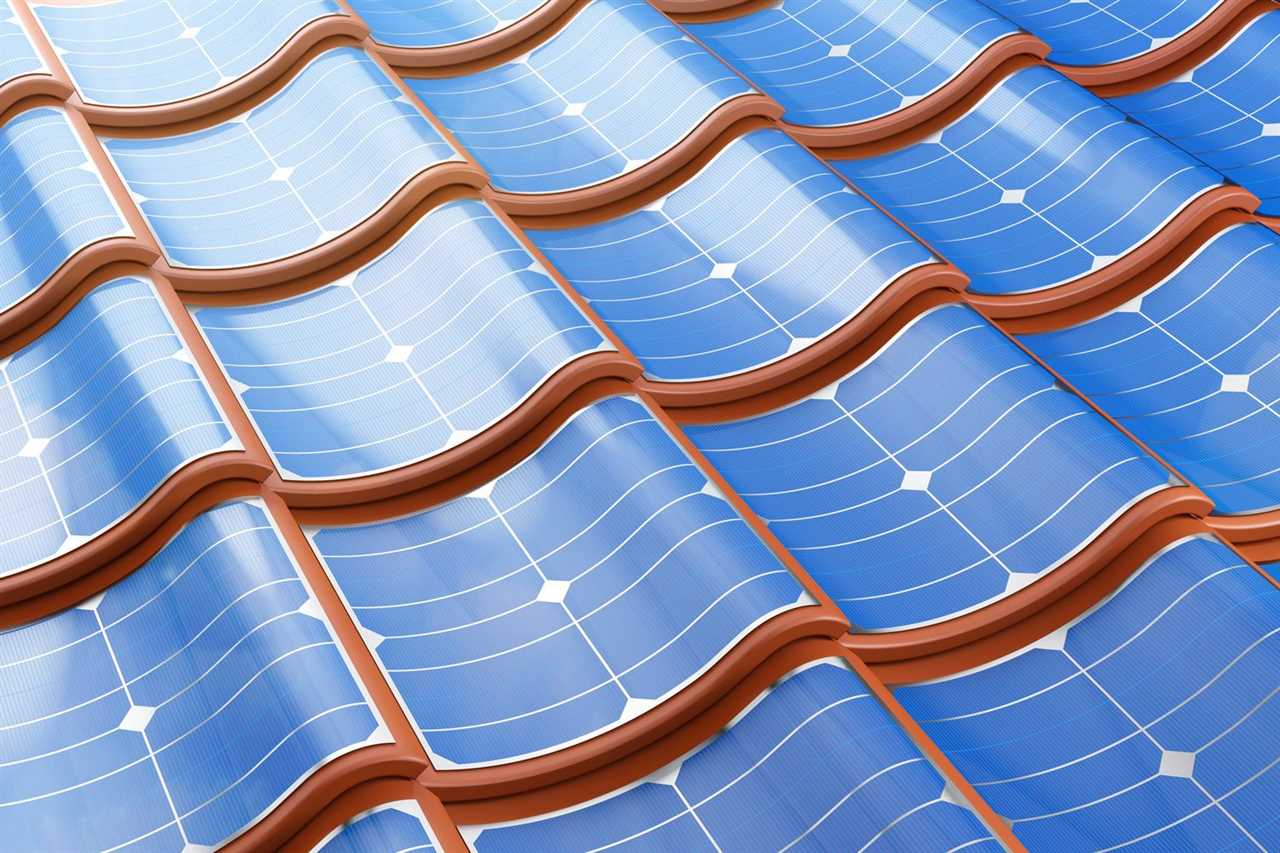Since we’re lucky enough on Earth to have our own star that sends a tremendous amount of energy to us every day, solar has always felt like an elegant solution to me. Why not turn our sunward-facing surfaces into gatherers of solar energy?
Actually, engineers and scientists are working on that. They’re figuring out ways to collect the sun’s energy on everything from car rooftops to windbreakers to the roof shingles of our homes.
“For the past decade, solar, integrated shingles have been the Holy Grail for roofers who are interested in solar,” says Matt Weiner of Golden Group Roofing and Solar in Massachusetts. “But what’s basically happened is that because it’s currently an expensive product, it really only appeals to a relatively small part of the market.”
What Are Solar Roof Shingles?

Solar roof shingles collect energy from the sun like traditional solar panels. But instead of being installed above the roof, they’re the actual roofing. A typical installation combines regular shingles on shady sections of the roof with solar shingles in the sunniest areas.
Several companies make solar shingles, each with their own style. Tesla and GAF Energy are the largest manufacturers.
“They each have unique designs which integrate into the roofing system for an aesthetically pleasing look,” says Weiner. “Suntegra and Luma are more niche manufacturers. Their solar shingles are similar to solar panels and use common solar materials which are integrated into a watertight frame.”
Are Solar Roof Shingles Legal?
Yes. Solar shingles must go through the same rigorous testing as other home electrical systems to become Underwriters Laboratory (UL) approved. However, manufacturers don’t have certified contractors in every state.
How Much Do Solar Roof Shingles Cost?
That depends. Variables include the size of the system and where you are in the country. But in general, installed solar shingles cost around five times as much as traditional roofing materials. If you measure their cost in watt hours, solar shingles cost between 25% and 100% or more per watt hour than traditional solar panels.
Some of that cost is offset by not buying and installing a separate roof covering. But with current technologies, it still costs considerably more than purchasing the two separately.
“It makes sense if the technology is there to combine them into one product and one installation,” says Weiner. “Theoretically that’s going to be a cost savings, but there’s still probably another generation or two to really get us there.”
Are Solar Roof Shingles Rebates and Tax Breaks Available?

Yes. Solar roof shingles are eligible for the same rebates and tax breaks as solar panels. This includes a 30% federal tax credit and other state and local tax incentives, some associated with the Inflation Reduction Act.
Bonus: Because you’re replacing the roof as part of the installation, the tax credit covers the cost of the entire roof and solar system, versus just the cost of the solar panels.
Are Solar Roof Shingles Worth It?
Maybe. If you can afford them, they’re a good option for combining a sleek aesthetic with the benefits of solar.
“I do think it’s worth it,” says Weiner. “But only for the right customer. Solar shingles appeal to someone who really wants their house to stand out and is willing to pay for that.”
Solar roof shingle pros
- Curb appeal;
- Less chance of leaking because one company installs the roof and panels;
- Similar life span to traditional solar panels and roofs;
- Durability, especially in high wind areas.
Solar roof shingle cons
- Cost;
- Not as efficient in watt hours, so it’s harder to maximize rooftop energy production;
- Not as good for hot climates, since there’s no airspace underneath for cooling (when solar materials get warm, the voltage drops);
- No passive home cooling effect like with solar panels, which add shade to the roof and reduce heat transfer from the sun into the house.
The Future of Solar Roof Shingles

“To date, solar shingles have not lived up to their promise of providing homeowners with cost-effective, highly efficient and aesthetically pleasing solar systems,” says Weiner. “But ultimately they will be the go-to solar product.”
Weiner says GAF Energy, one of the largest roofing manufacturers in the country (and his former employer), wants to make the technology worthwhile on a large scale. The company just built a second manufacturing plant while expanding its certified roofing contractor network.
“They’re investing millions of dollars in the technology and their leadership firmly believes in this is the way that that solar is going,” says Weiner. “So it’s ultimately going happen, I believe, but the timeframe is still unknown.
“It’s just proven to be more difficult to really get these two systems to integrate. And at the same time, innovation is happening very rapidly with solar panels, and the solar roofing industry has to compete with that as well.”
Did you miss our previous article...
https://rsssuperfeeds.com/life-hacks/merrells-latest-water-shoes-are-better-than-crocs






